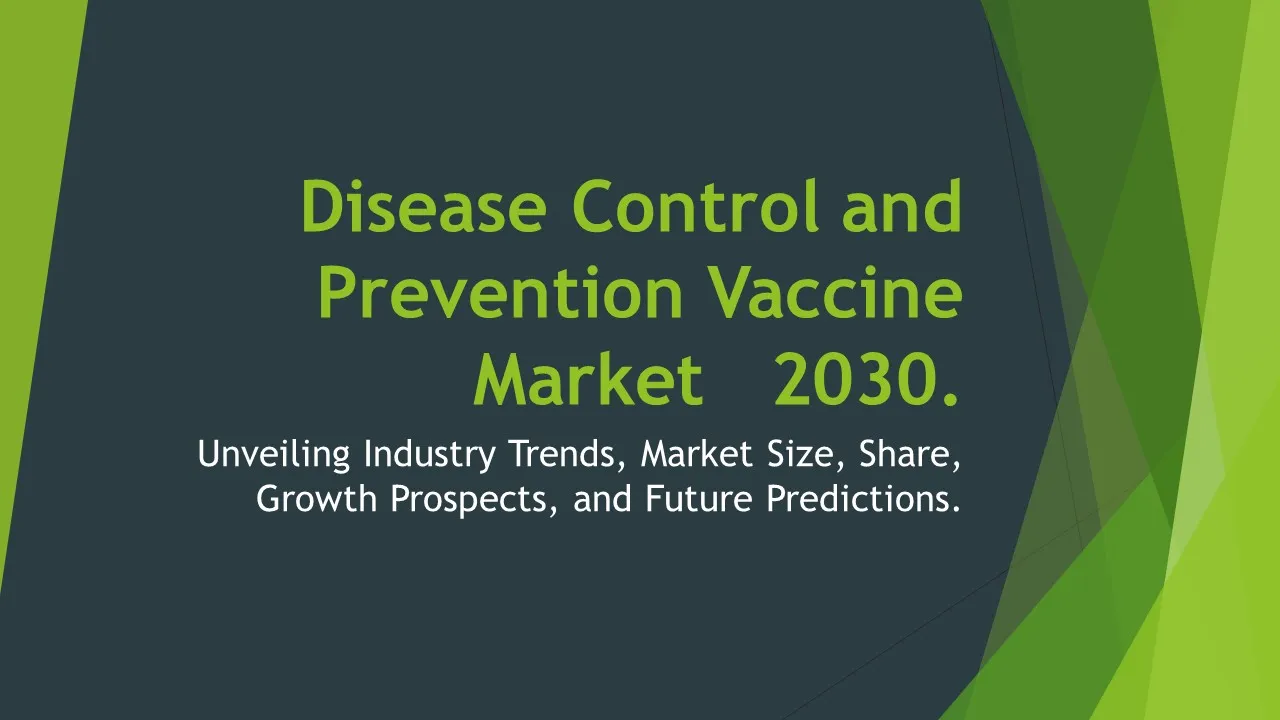Gonadotropin releasing Hormone Agonist
Gonadotropin Releasing Hormone Agonist Market Segments - by Product Type (Leuprolide, Goserelin, Triptorelin, Nafarelin, Histrelin), Application (Prostate Cancer, Breast Cancer, Endometriosis, Central Precocious Puberty, Others), Distribution Channel (Hospitals, Specialty Clinics, Retail Pharmacies, Online Pharmacies), Ingredient Type (Synthetic GnRH Agonists, Natural GnRH Agonists), and Region (North America, Europe, Asia Pacific, Latin America, Middle East & Africa) - Global Industry Analysis, Growth, Share, Size, Trends, and Forecast 2025-2035
- Report Preview
- Table Of Content
- Segments
- Methodology
Gonadotropin Releasing Hormone Agonist Market Outlook
The global Gonadotropin Releasing Hormone (GnRH) Agonist market was valued at approximately USD 4.2 billion in 2023 and is anticipated to grow at a compound annual growth rate (CAGR) of around 6.5% through 2035. The growing prevalence of hormone-sensitive cancers, particularly prostate and breast cancer, alongside increasing awareness regarding treatment options, is significantly driving market growth. Furthermore, the rising incidence of conditions such as endometriosis and central precocious puberty, which require effective management through GnRH agonists, is also contributing to the market expansion. The advancement in drug formulations and the increasing focus on research and development to improve therapeutic efficacy are expected to support the market growth trajectory. In addition, the proliferation of online pharmacies and healthcare services is likely to enhance distribution capacities, further propelling the market forward.
Growth Factor of the Market
The growth of the GnRH Agonist market can be largely attributed to the increasing incidence of hormone-dependent cancers and other medical conditions requiring hormonal modulation. As the global population ages, the risk of developing prostate and breast cancer has escalated, necessitating the use of specialized treatments like GnRH agonists. Additionally, improved diagnostic techniques and healthcare infrastructure have led to early detection and management of these conditions, fostering a higher demand for effective treatment options. The introduction of novel therapeutic approaches and the ongoing research into expanding the indications for use of GnRH agonists are also pivotal factors boosting market growth. Moreover, the growing acceptance of these therapies among healthcare professionals and patients alike is playing a crucial role in further driving the market. The increasing investment in healthcare expenditure and awareness campaigns about hormonal disorders are expected to catalyze the market's upward trajectory.
Key Highlights of the Market
- Significant growth expected due to rising incidences of hormone-sensitive cancers such as prostate and breast cancer.
- Increased awareness and healthcare infrastructure improvements contributing to early diagnosis and treatment.
- Advancements in formulations and therapeutic approaches enhancing treatment outcomes.
- Expansion of distribution channels, including online pharmacies, improving accessibility to patients.
- Ongoing research and development efforts aimed at broadening the indications for GnRH agonists.
By Product Type
Leuprolide:
Leuprolide is one of the most extensively studied and utilized GnRH agonists, particularly known for its application in treating prostate cancer and other hormone-dependent conditions. It functions by downregulating the production of luteinizing hormone (LH) and follicle-stimulating hormone (FSH), thereby reducing testosterone levels in men and estrogen levels in women. The growing prevalence of prostate cancer has significantly boosted the demand for leuprolide, as it is often considered the first-line treatment option. Additionally, the availability of various formulations, including depot injections that ensure prolonged drug release, enhances patient compliance and efficacy. The market for leuprolide is expected to witness substantial growth as healthcare systems continue to adopt it as a standard therapeutic agent for hormone-sensitive malignancies.
Goserelin:
Goserelin is another prominent GnRH agonist that has gained traction, particularly in the treatment of breast cancer and endometriosis. Similar to leuprolide, goserelin works by suppressing sex hormone production through its action on the pituitary gland. The use of goserelin is not only limited to oncology but is also increasingly recognized for its efficacy in managing benign gynecological conditions, thus expanding its application range. Owing to its effectiveness and relatively favorable side effect profile, goserelin is becoming a favored choice among clinicians for managing hormone-dependent diseases. The growing awareness and adoption of goserelin in clinical practice are anticipated to drive the segment's growth in the coming years.
Triptorelin:
Triptorelin is gaining prominence in the GnRH agonist landscape, particularly for its applications in prostate cancer and central precocious puberty. With its unique formulation promoting a more sustained release, triptorelin can be administered less frequently, thereby improving patient adherence to therapy. The rising incidence of precocious puberty among children has highlighted the need for effective treatments, driving demand for triptorelin. The ability of triptorelin to induce medical castration and its use in combination therapies further enhance its market appeal. As healthcare providers continue to recognize the efficacy of triptorelin in diverse patient populations, the market for this product type is expected to expand significantly.
Nafarelin:
Nafarelin is primarily used in the treatment of endometriosis and central precocious puberty, capitalizing on its ability to suppress gonadotropin release through its action on the pituitary gland. This agent has shown considerable effectiveness in alleviating symptoms associated with endometriosis, thereby contributing to improved quality of life for affected women. The increasing awareness and diagnosis of endometriosis, alongside the need for effective management options, are propelling the nafarelin segment of the market. With ongoing research into its long-term effects and potential for additional indications, nafarelin is positioned for growth in the coming years.
Histrelin:
Histrelin is another important GnRH agonist known for its use in treating advanced prostate cancer as well as central precocious puberty. It operates similarly to other GnRH agonists by reducing the production of sex hormones, thus playing a critical role in hormonal management. The introduction of a longer-acting implantable formulation has provided a significant advantage, allowing patients to receive treatment with less frequent dosing intervals. This convenience is expected to increase its acceptability among patients and healthcare providers alike. The continued focus on developing innovative drug delivery systems for histrelin is likely to drive its market growth in the future.
By Application
Prostate Cancer:
Prostate cancer represents one of the largest applications of GnRH agonists as these agents are integral in managing advanced cases of this disease. The use of GnRH agonists in prostate cancer treatment aims to achieve medical castration, thereby reducing testosterone levels that promote tumor growth. With the increasing prevalence of prostate cancer globally, the demand for effective treatment options is amplified. As healthcare professionals adopt GnRH agonists as standard care protocols, the segment is experiencing robust growth. The ongoing clinical studies and trials aimed at assessing combination therapies further signify the importance of GnRH agonists in the therapeutic arsenal against prostate cancer.
Breast Cancer:
The application of GnRH agonists in breast cancer treatment is becoming increasingly significant, particularly in premenopausal women where hormonal therapy can be essential. These agents work by suppressing estrogen production, thereby limiting the hormone's stimulatory effects on tumor cells. The growing incidence of breast cancer, alongside advancements in treatment protocols, has led to an increased adoption of GnRH agonists within oncological practices. Furthermore, the exploration of their use in adjuvant settings and as part of combination therapies is expected to propel the market for this application as clinicians seek comprehensive management strategies for breast cancer patients.
Endometriosis:
GnRH agonists are widely recognized for their effectiveness in managing endometriosis, a condition that often leads to significant discomfort and impaired quality of life. By inducing a hypoestrogenic state, these agents alleviate pain and reduce the size of endometrial lesions. The increasing recognition of endometriosis as a significant health concern and the growing demand for effective management options are driving the uptake of GnRH agonists in this application. Additionally, the exploration of long-term treatment regimens and the availability of various formulations provide patients with more options, contributing to the segment's growth.
Central Precocious Puberty:
Central precocious puberty, characterized by the early onset of secondary sexual characteristics, is another key application for GnRH agonists. These agents effectively halt premature sexual maturation, allowing for normal physiological development. The increasing incidence of this condition, coupled with heightened awareness among healthcare providers and parents, has led to a growing demand for GnRH agonists to manage it. Furthermore, the recognition of the psychological impact of early puberty on children and families is driving healthcare providers to utilize these treatments more frequently, enhancing the segment's prospects.
Others:
Aside from the primary applications mentioned, GnRH agonists are also utilized in various other medical conditions requiring hormonal regulation. These include conditions such as uterine fibroids and certain fertility-related issues. The versatility of GnRH agonists in addressing diverse hormonal disorders is expanding their market relevance. Continuous research into additional therapeutic areas and potential indications for GnRH agonists is expected to further bolster this segment. As clinicians explore novel uses and combinations with other therapeutic modalities, the demand for GnRH agonists in these applications is anticipated to grow steadily in the coming years.
By Distribution Channel
Hospitals:
Hospitals remain a significant distribution channel for GnRH agonists, given their role as primary care providers for patients diagnosed with conditions like prostate cancer and endometriosis. The integration of specialized oncology and reproductive health units within hospitals enhances the administration of these agents, facilitating access to comprehensive treatment plans. Moreover, hospitals often serve as a hub for clinical trials and research initiatives, further promoting the use of GnRH agonists. As patient referrals and multidisciplinary approaches continue to evolve, hospitals are expected to maintain a strong market share in distributing GnRH agonists.
Specialty Clinics:
Specialty clinics play an increasingly pivotal role in the distribution of GnRH agonists, particularly in areas such as reproductive health, endocrinology, and oncology. These clinics are often equipped to provide targeted care and personalized treatment protocols, making them favorable settings for administering GnRH agonists. The rise in patient-centric healthcare models and an increase in the number of specialty clinics are expected to enhance accessibility to these treatments. Furthermore, the emphasis on specialized expertise in managing conditions such as endometriosis and hormone-sensitive cancers will likely propel the demand for GnRH agonists through this channel.
Retail Pharmacies:
Retail pharmacies serve as a crucial distribution channel for GnRH agonists, providing patients with access to these medications following a prescription. As pharmacological management becomes an integral part of treatment for various hormonal disorders, the importance of retail pharmacies in ensuring medication availability cannot be understated. The establishment of strong relationships between pharmacies and healthcare providers enables better patient education and adherence to treatment regimens. Furthermore, initiatives aimed at improving patient access to medications through discount programs and insurance coverage are expected to enhance the retail pharmacy market for GnRH agonists.
Online Pharmacies:
The rise of online pharmacies has transformed the landscape of pharmaceutical distribution, including for GnRH agonists. With increased consumer inclination towards convenience and privacy, online pharmacies provide an accessible platform for obtaining these medications. This distribution channel is particularly advantageous for patients who may feel uncomfortable discussing sensitive health issues in person. The growth of e-prescriptions and telehealth services has further facilitated the expansion of online pharmacies, making it easier for patients to acquire GnRH agonists. As technology continues to advance, the online pharmacy segment is expected to see significant growth, driven by increasing consumer trust and regulatory support.
By Ingredient Type
Synthetic GnRH Agonists:
Synthetic GnRH agonists dominate the market due to their established effectiveness and widespread application in treating various hormone-sensitive conditions. These agents are chemically modified to enhance their stability and bioavailability, resulting in improved pharmacokinetic profiles. The growing body of clinical evidence supporting their use in oncology and reproductive health is a key factor driving their adoption. Furthermore, advancements in synthetic formulations are leading to the development of long-acting preparations, thus enhancing patient compliance and therapeutic outcomes. The sustained interest in synthetic GnRH agonists is expected to propel this segment's growth in the coming years.
Natural GnRH Agonists:
Natural GnRH agonists are less common in clinical use compared to synthetic counterparts but are gaining attention due to their potential biological efficacy and safety profiles. These agents are closely related to naturally occurring hormones, which may facilitate a more favorable physiological response in patients. The growing trend towards natural and biologic therapies in healthcare is fostering interest in the development of natural GnRH agonists. Research into their applications and clinical effectiveness is ongoing, and as more data emerge, this segment may see an increase in utilization, especially among patients seeking alternative treatment options.
By Region
The North American region holds a substantial share of the global GnRH agonist market, with a valuation of approximately USD 1.9 billion in 2023, underscored by the high prevalence of hormone-sensitive cancers and the presence of advanced healthcare infrastructure. The continued investment in healthcare technology and research, coupled with the increasing adoption of innovative treatment options, positions North America as a leader in this market segment. Moreover, the high level of awareness among healthcare professionals and patients alike regarding the treatment of conditions such as prostate cancer and endometriosis is expected to sustain a robust CAGR of around 7.0% during the forecast period.
In Europe, the GnRH agonist market is witnessing steady growth, valued at approximately USD 1.5 billion in 2023. The increasing recognition of hormonal disorders and the establishment of comprehensive treatment guidelines are driving demand in this region. The expansion of specialty clinics and healthcare networks dedicated to oncology and reproductive health is further enhancing service delivery. The ongoing research into new indications and formulations for GnRH agonists is also expected to bolster market growth in Europe. As demand continues to rise, the European market is projected to achieve a CAGR of around 5.5% over the next decade.
Opportunities
The Gonadotropin Releasing Hormone Agonist market presents numerous opportunities for stakeholders, particularly as advancements in medical science continue to evolve. The expansion of research initiatives aimed at identifying new therapeutic indications for GnRH agonists is one significant avenue for growth. As researchers explore the potential of these agents in treating various conditions beyond their traditional applications, such as uterine fibroids and polycystic ovary syndrome, an expanding market frontier emerges. Furthermore, the increasing emphasis on personalized medicine and tailored treatment protocols provides an opportunity for the introduction of innovative formulations that cater to specific patient needs. Stakeholders who can leverage these trends and engage in collaborative research and development efforts stand to gain a competitive edge in the market.
Another promising opportunity lies in the growing awareness and education surrounding hormonal disorders. As patients become more informed about their health and treatment options, the demand for effective therapies such as GnRH agonists is likely to rise. This is particularly true in developing regions where healthcare access is improving, and more patients are seeking specialized treatments for conditions like endometriosis and hormone-sensitive cancers. The potential for expanding distribution channels, including online pharmacies and telehealth services, creates additional avenues for market penetration. By harnessing these opportunities, companies can significantly enhance their market presence and improve patient access to vital therapies.
Threats
Despite the promising growth prospects, the Gonadotropin Releasing Hormone Agonist market faces several threats that could impede its expansion. One of the most pressing challenges is the increasing competition from alternative therapies and treatment modalities, especially with the advent of novel biologics and immunotherapies. These alternatives may offer similar or enhanced therapeutic benefits, posing a risk to the market share of traditional GnRH agonists. Additionally, the potential for generics to enter the market as patents expire presents a threat to pricing power and revenue for established manufacturers. Companies must navigate this competitive landscape carefully by innovating and differentiating their product offerings to maintain their market position.
Furthermore, regulatory hurdles can also serve as a restraining factor for the market. The approval process for new drugs can be lengthy and costly, with stringent requirements that may delay the introduction of new GnRH agonists or formulations to the market. Additionally, the potential for safety concerns, including side effects and long-term implications of GnRH therapy, can lead to increased scrutiny from regulatory bodies. Companies must prioritize safety and efficacy in their drug development processes to navigate these challenges successfully while ensuring compliance with regulatory standards. Addressing these threats proactively will be crucial to sustaining growth in the Gonadotropin Releasing Hormone Agonist market.
Competitor Outlook
- AbbVie Inc.
- Ferring Pharmaceuticals
- Teva Pharmaceutical Industries Ltd.
- Bristol-Myers Squibb
- Novartis AG
- Sanofi S.A.
- Merck & Co., Inc.
- Helsinn Healthcare S.A.
- Endo Pharmaceuticals Inc.
- Mylan N.V.
- Ipsen S.A.
- Amgen Inc.
- AstraZeneca PLC
- Pfizer Inc.
- Galena Biopharma Inc.
The competitive landscape of the Gonadotropin Releasing Hormone Agonist market is characterized by a diverse array of companies focusing on various aspects of research, development, and distribution. Key players in the market are consistently engaged in efforts to innovate and expand their portfolios, offering both established and new formulations of GnRH agonists. Companies like AbbVie and Ferring Pharmaceuticals have established themselves as frontrunners, leveraging their extensive research capabilities and strong market presence. With a focus on expanding therapeutic indications and improving patient outcomes, these companies are strategically positioned to capitalize on growing market demand.
Additionally, generic manufacturers like Teva Pharmaceutical Industries and Mylan N.V. are making significant contributions to market dynamics by providing cost-effective alternatives to branded GnRH agonists. This competition has prompted established players to enhance their value propositions through improved formulations and patient support initiatives. Furthermore, the collaboration between pharmaceutical companies and healthcare providers is becoming increasingly essential for ensuring the successful adoption of GnRH therapies in clinical practice. By fostering such partnerships, companies can improve market access and address patient needs more effectively.
Moreover, the presence of emerging players, including Galena Biopharma and others, signifies a burgeoning interest in the GnRH agonist space. These companies are particularly focused on niche applications and novel drug delivery systems, which may prove vital in differentiating themselves from larger competitors. As the market evolves, the ability to adapt to changing treatment paradigms and patient preferences will be crucial for success. Continuous investment in research and development, along with strategic collaborations, will ultimately define the competitive landscape for Gonadotropin Releasing Hormone Agonists in the years to come.
1 Appendix
- 1.1 List of Tables
- 1.2 List of Figures
2 Introduction
- 2.1 Market Definition
- 2.2 Scope of the Report
- 2.3 Study Assumptions
- 2.4 Base Currency & Forecast Periods
3 Market Dynamics
- 3.1 Market Growth Factors
- 3.2 Economic & Global Events
- 3.3 Innovation Trends
- 3.4 Supply Chain Analysis
4 Consumer Behavior
- 4.1 Market Trends
- 4.2 Pricing Analysis
- 4.3 Buyer Insights
5 Key Player Profiles
- 5.1 Amgen Inc.
- 5.1.1 Business Overview
- 5.1.2 Products & Services
- 5.1.3 Financials
- 5.1.4 Recent Developments
- 5.1.5 SWOT Analysis
- 5.2 Ipsen S.A.
- 5.2.1 Business Overview
- 5.2.2 Products & Services
- 5.2.3 Financials
- 5.2.4 Recent Developments
- 5.2.5 SWOT Analysis
- 5.3 Mylan N.V.
- 5.3.1 Business Overview
- 5.3.2 Products & Services
- 5.3.3 Financials
- 5.3.4 Recent Developments
- 5.3.5 SWOT Analysis
- 5.4 AbbVie Inc.
- 5.4.1 Business Overview
- 5.4.2 Products & Services
- 5.4.3 Financials
- 5.4.4 Recent Developments
- 5.4.5 SWOT Analysis
- 5.5 Novartis AG
- 5.5.1 Business Overview
- 5.5.2 Products & Services
- 5.5.3 Financials
- 5.5.4 Recent Developments
- 5.5.5 SWOT Analysis
- 5.6 Pfizer Inc.
- 5.6.1 Business Overview
- 5.6.2 Products & Services
- 5.6.3 Financials
- 5.6.4 Recent Developments
- 5.6.5 SWOT Analysis
- 5.7 Sanofi S.A.
- 5.7.1 Business Overview
- 5.7.2 Products & Services
- 5.7.3 Financials
- 5.7.4 Recent Developments
- 5.7.5 SWOT Analysis
- 5.8 AstraZeneca PLC
- 5.8.1 Business Overview
- 5.8.2 Products & Services
- 5.8.3 Financials
- 5.8.4 Recent Developments
- 5.8.5 SWOT Analysis
- 5.9 Merck & Co., Inc.
- 5.9.1 Business Overview
- 5.9.2 Products & Services
- 5.9.3 Financials
- 5.9.4 Recent Developments
- 5.9.5 SWOT Analysis
- 5.10 Bristol-Myers Squibb
- 5.10.1 Business Overview
- 5.10.2 Products & Services
- 5.10.3 Financials
- 5.10.4 Recent Developments
- 5.10.5 SWOT Analysis
- 5.11 Galena Biopharma Inc.
- 5.11.1 Business Overview
- 5.11.2 Products & Services
- 5.11.3 Financials
- 5.11.4 Recent Developments
- 5.11.5 SWOT Analysis
- 5.12 Ferring Pharmaceuticals
- 5.12.1 Business Overview
- 5.12.2 Products & Services
- 5.12.3 Financials
- 5.12.4 Recent Developments
- 5.12.5 SWOT Analysis
- 5.13 Helsinn Healthcare S.A.
- 5.13.1 Business Overview
- 5.13.2 Products & Services
- 5.13.3 Financials
- 5.13.4 Recent Developments
- 5.13.5 SWOT Analysis
- 5.14 Endo Pharmaceuticals Inc.
- 5.14.1 Business Overview
- 5.14.2 Products & Services
- 5.14.3 Financials
- 5.14.4 Recent Developments
- 5.14.5 SWOT Analysis
- 5.15 Teva Pharmaceutical Industries Ltd.
- 5.15.1 Business Overview
- 5.15.2 Products & Services
- 5.15.3 Financials
- 5.15.4 Recent Developments
- 5.15.5 SWOT Analysis
- 5.1 Amgen Inc.
6 Market Segmentation
- 6.1 Gonadotropin releasing Hormone Agonist Market, By Application
- 6.1.1 Prostate Cancer
- 6.1.2 Breast Cancer
- 6.1.3 Endometriosis
- 6.1.4 Central Precocious Puberty
- 6.1.5 Others
- 6.2 Gonadotropin releasing Hormone Agonist Market, By Product Type
- 6.2.1 Leuprolide
- 6.2.2 Goserelin
- 6.2.3 Triptorelin
- 6.2.4 Nafarelin
- 6.2.5 Histrelin
- 6.3 Gonadotropin releasing Hormone Agonist Market, By Ingredient Type
- 6.3.1 Synthetic GnRH Agonists
- 6.3.2 Natural GnRH Agonists
- 6.4 Gonadotropin releasing Hormone Agonist Market, By Distribution Channel
- 6.4.1 Hospitals
- 6.4.2 Specialty Clinics
- 6.4.3 Retail Pharmacies
- 6.4.4 Online Pharmacies
- 6.1 Gonadotropin releasing Hormone Agonist Market, By Application
7 Competitive Analysis
- 7.1 Key Player Comparison
- 7.2 Market Share Analysis
- 7.3 Investment Trends
- 7.4 SWOT Analysis
8 Research Methodology
- 8.1 Analysis Design
- 8.2 Research Phases
- 8.3 Study Timeline
9 Future Market Outlook
- 9.1 Growth Forecast
- 9.2 Market Evolution
10 Geographical Overview
- 10.1 Europe - Market Analysis
- 10.1.1 By Country
- 10.1.1.1 UK
- 10.1.1.2 France
- 10.1.1.3 Germany
- 10.1.1.4 Spain
- 10.1.1.5 Italy
- 10.1.1 By Country
- 10.2 Asia Pacific - Market Analysis
- 10.2.1 By Country
- 10.2.1.1 India
- 10.2.1.2 China
- 10.2.1.3 Japan
- 10.2.1.4 South Korea
- 10.2.1 By Country
- 10.3 Latin America - Market Analysis
- 10.3.1 By Country
- 10.3.1.1 Brazil
- 10.3.1.2 Argentina
- 10.3.1.3 Mexico
- 10.3.1 By Country
- 10.4 North America - Market Analysis
- 10.4.1 By Country
- 10.4.1.1 USA
- 10.4.1.2 Canada
- 10.4.1 By Country
- 10.5 Middle East & Africa - Market Analysis
- 10.5.1 By Country
- 10.5.1.1 Middle East
- 10.5.1.2 Africa
- 10.5.1 By Country
- 10.6 Gonadotropin releasing Hormone Agonist Market by Region
- 10.1 Europe - Market Analysis
11 Global Economic Factors
- 11.1 Inflation Impact
- 11.2 Trade Policies
12 Technology & Innovation
- 12.1 Emerging Technologies
- 12.2 AI & Digital Trends
- 12.3 Patent Research
13 Investment & Market Growth
- 13.1 Funding Trends
- 13.2 Future Market Projections
14 Market Overview & Key Insights
- 14.1 Executive Summary
- 14.2 Key Trends
- 14.3 Market Challenges
- 14.4 Regulatory Landscape
Segments Analyzed in the Report
The global Gonadotropin releasing Hormone Agonist market is categorized based on
By Product Type
- Leuprolide
- Goserelin
- Triptorelin
- Nafarelin
- Histrelin
By Application
- Prostate Cancer
- Breast Cancer
- Endometriosis
- Central Precocious Puberty
- Others
By Distribution Channel
- Hospitals
- Specialty Clinics
- Retail Pharmacies
- Online Pharmacies
By Ingredient Type
- Synthetic GnRH Agonists
- Natural GnRH Agonists
By Region
- North America
- Europe
- Asia Pacific
- Latin America
- Middle East & Africa
Key Players
- AbbVie Inc.
- Ferring Pharmaceuticals
- Teva Pharmaceutical Industries Ltd.
- Bristol-Myers Squibb
- Novartis AG
- Sanofi S.A.
- Merck & Co., Inc.
- Helsinn Healthcare S.A.
- Endo Pharmaceuticals Inc.
- Mylan N.V.
- Ipsen S.A.
- Amgen Inc.
- AstraZeneca PLC
- Pfizer Inc.
- Galena Biopharma Inc.
- Publish Date : Jan 21 ,2025
- Report ID : PH-66426
- No. Of Pages : 100
- Format : |
- Ratings : 4.5 (110 Reviews)









